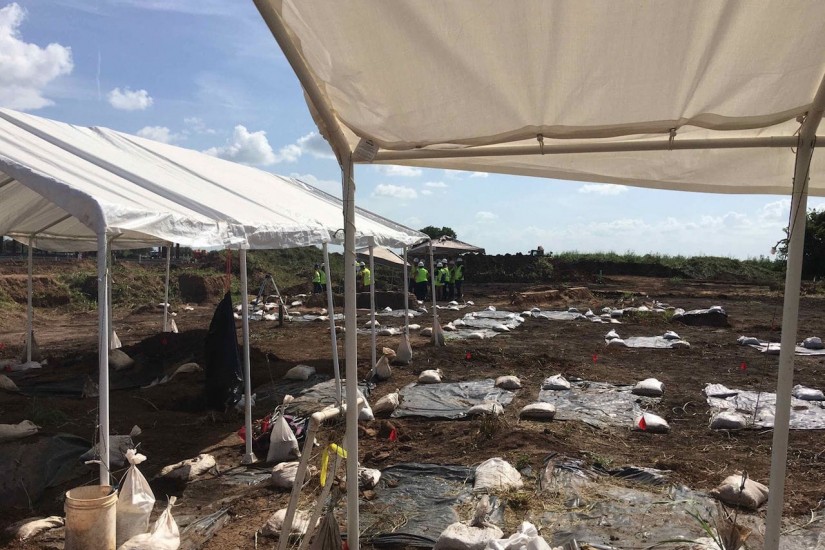Today the city of Sugar Land is a sprawling suburb southwest of Houston, home to Imperial Sugar Co., shopping malls and endless cul-de-sacs. But more than a century ago, it was a sprawling network of sugar cane plantations and prison camps. Sugar Land was better known then as the Hellhole on the Brazos. From sunup to sundown, convicts who were leased by the state to plantation owners toiled in the fields chopping sugar cane sometimes until they “dropped dead in their tracks,” as the State Convention of Colored Men of Texas complained in 1883.
In modern-day Sugar Land, it was all easy to forget — but not for one man named Reginald Moore, who couldn’t stop thinking about it.
Moore started researching Sugar Land’s slavery and convict-leasing history after spending time working as a prison guard at one of Texas’s oldest prisons, and his curiosity intensified. He had a hunch. Based on what he learned, he believed that the bodies of former slaves and black prisoners were still buried in Sugar Land’s backyard. He focused his attention on a site called the Imperial State Prison Farm, the one that bore the name of the country’s premier sugar company.
For 19 years, he searched for their bodies, stopping just short of sticking a shovel in the dirt himself.
“I felt like I had to be a voice for the voiceless,” said Moore, who is African American.
This week, his quest produced results.
At the former Imperial State Prison Farm site, archaeologists have unearthed an entire plot of precise rectangular graves for 95 souls, each buried two to five feet beneath the soil in nearly disintegrated pinewood caskets. The 19th-century cemetery was unmarked, with no vestige of its existence visible from the surface.
“This place was almost truly lost to history,” archaeologist Reign Clark of Goshawk Environmental Consulting told The Washington Post.
The graves were found, really, by accident. The local Fort Bend Independent School District began construction on a new school at the former prison site in October, deciding to hire an archaeologist to supervise the work after Moore’s warnings of the possible burial grounds, a spokeswoman said. In February, a backhoe operator happened to see something jutting out of the dirt. He thought it was a human bone
